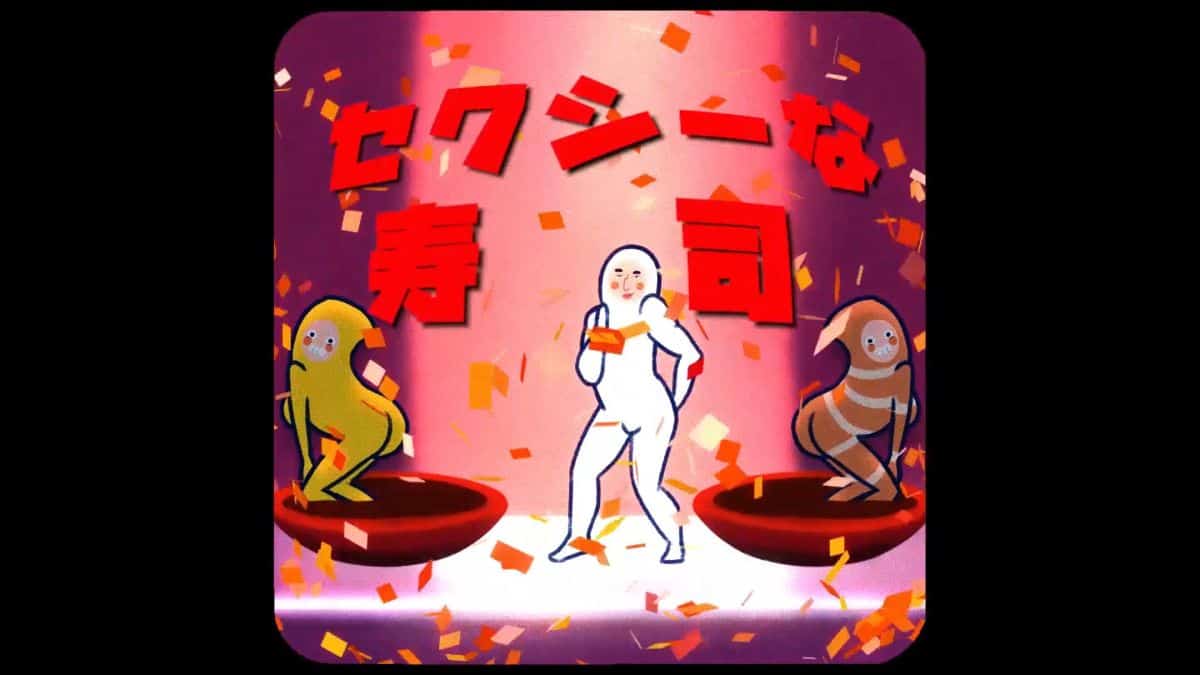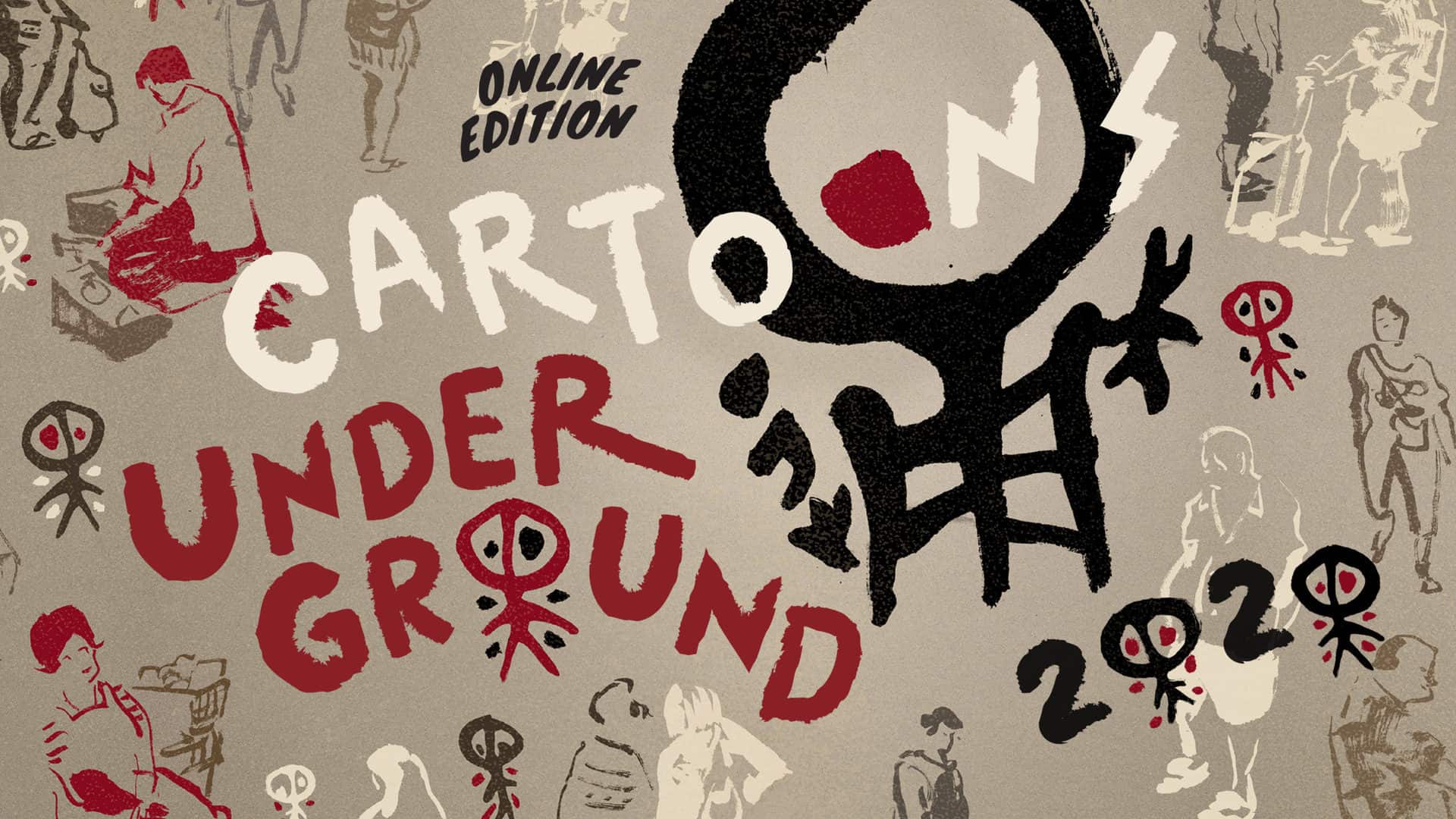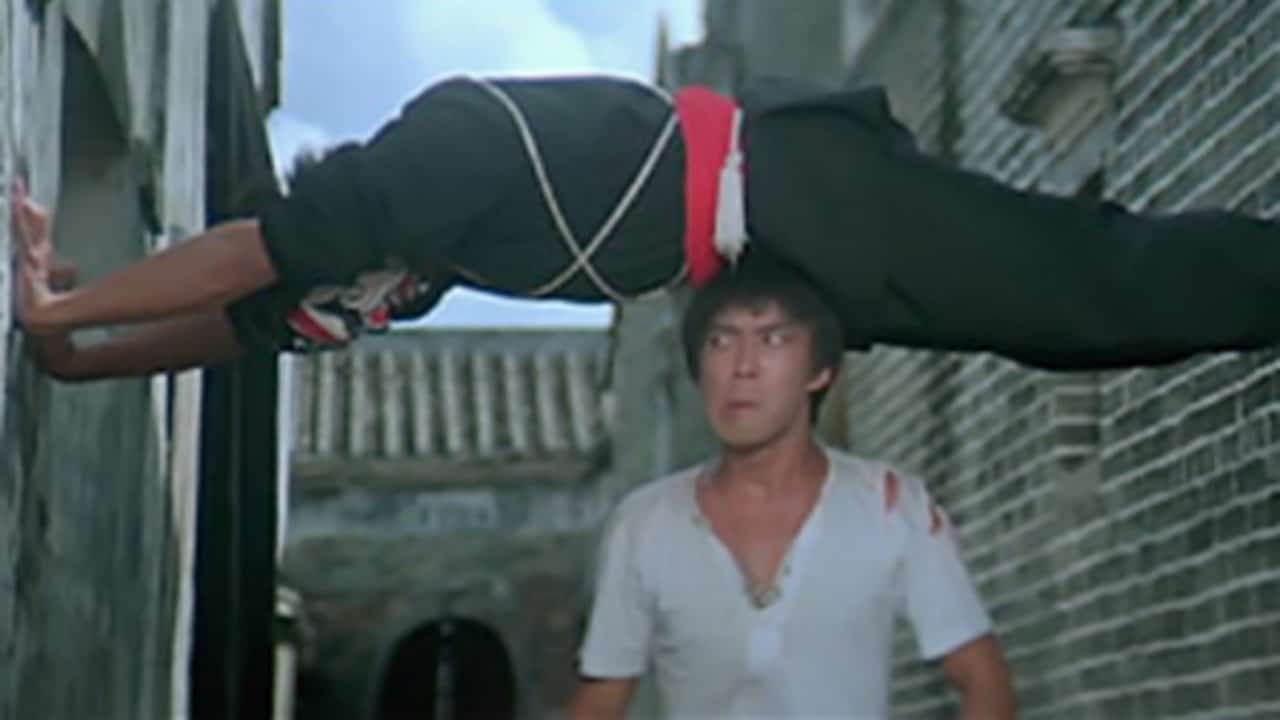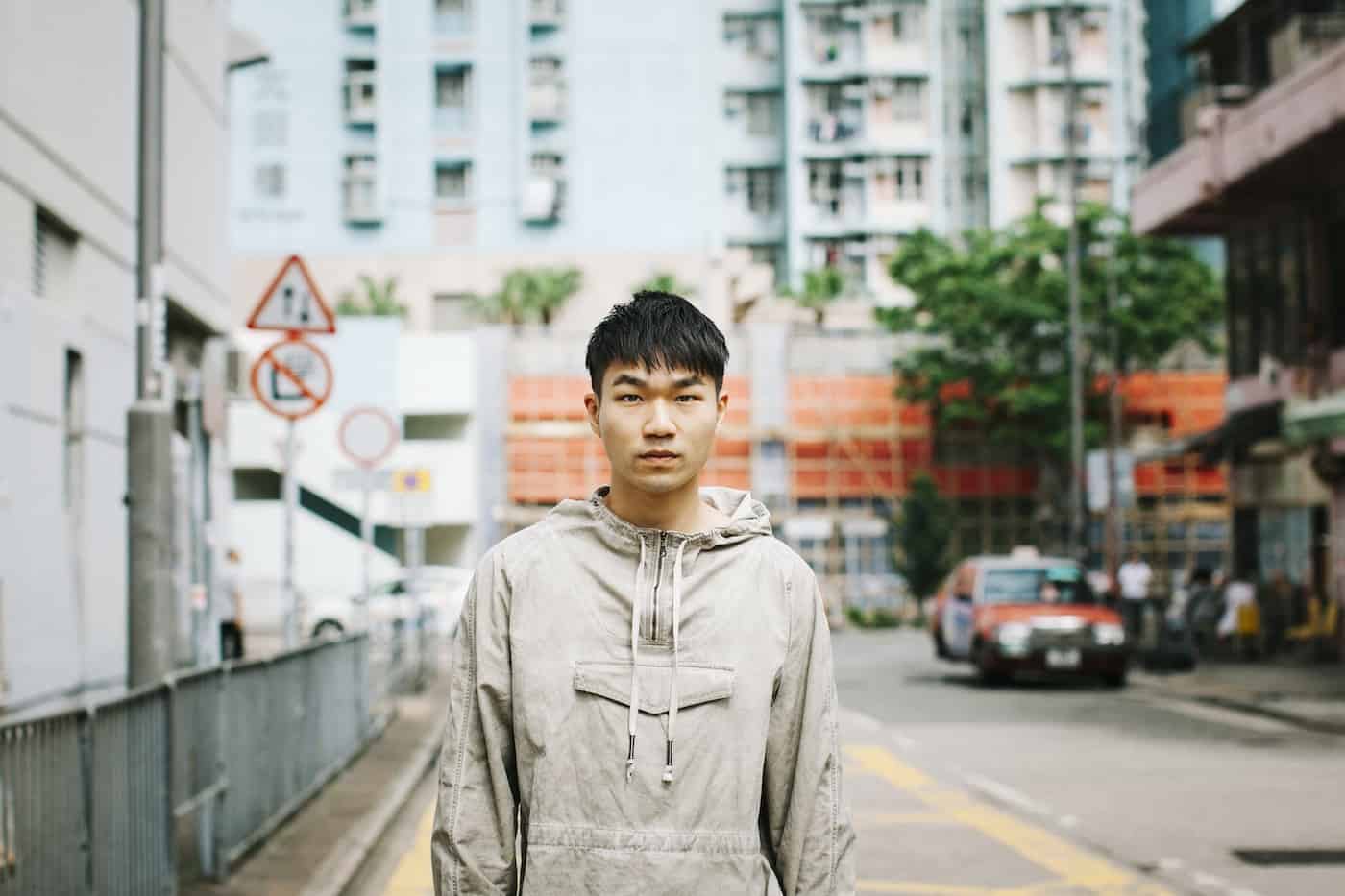Though we at Asian Movie Pulse could not be on-the-ground in Singapore, we still had the opportunity to interview three filmmakers from underground – or at that is, this year's Cartoons Underground. We Zoom'd with three promising student animators from different Singaporean schools: director Lim Jia Ying from Nanyang Academy of Fine Arts; producer/director Wong Shi Teng from Nanyang Technological University; and director Calleen Koh from LASALLE College of the Arts.
Judging from their shorts alone, the three emerging filmmakers have massively different art styles. Lim Jia Ying's “Watermelon Please” leans more into an Illustrator-heavy aesthetic, animated mostly in iPad's Procreate and edited in AfterEffects. Wong Shi Teng's team for “Strange Occurrences: Bukit Bulabu” depend on stop-motion in industry-standard program, DragonFrame. And Calleen Koh – the youngest of the group – laughs about all the work spent on TVPaint, Photoshop, AfterEffects, and researching nineties Japanese advertisements for “Sexy Sushi.” This wonderfully diverse palette of styles and schools only speaks to the healthy variety of voices growing in Singapore's independent animation scene. We're delighted to present to you the low-down of Singapore's emerging talent below.
This interview has been edited and redacted for clarity's sake. Many thanks to Programme Director Tan Wei Keong for organizing the call and providing extra details.
How did you start your animation journey? Did you enter your programs intending to major in animation?
Calleen Koh (“Sexy Sushi”): [For me,] it all started when I went to a Pixar exhibition when I was eleven. Before that, I didn't have any concept of what animation was, it never occurred to me how the characters I keep seeing on the screens were made – it always felt like they just existed that way. That's when I had an awakening, oh, people can create and control all these things with one computer. I was so amazed by that and it completely blew my mind. I went down this Internet rabbit hole after the exhibition where I started to search all the behind-the-scenes details from different movies I loved. Slowly, my dreams shifted towards animation productions and now I'm in college pursuing this path.
Wong Shi Teng (“Strange Occurrences: Bukit Bulabu”): It started for me before I went to [Ngee Ann] Polytechnic. Going into Poly, I wanted to study Business – but someone told me I didn't need to learn business to get into business. Around that time, I just happened to start exploring art again and was really inspired by Hayao Miyazaki. Looking at all the choices I had, animation ended up being on top of the list and I thought I might as well pick up an interesting new skill. My interests developed in Poly, and I continued to pursue animation in university. I think it was during my final year project in PolyI found out that I wanted to work as a producer in animation.
Lim Jia Ying (“Watermelon Please”): I studied Illustration. I thought about animation before in my first year, but I gave up on that then. However, after interning at this this company [Finding Pictures], they've shown me so much of what animation can do. I realized there is so much possibility. I also just watched a lot of anime – I watched 24/7, day and night, thinking I want to make this move.
I think it's interesting how you all have such different styles as well. How did you come to using the styles that you did for your short films?
Wong Shi Teng: It's a process. I feel like my ‘style' became evident to me after my school exchange The different pace of life allowed and inspired me to experiment with ideas that are less serious and more fun and stupid. The other codirectors I worked with had quirky styles in similar ways. We wanted to work with stop motion because it was a medium that was super enjoyable and fun for the 3 of us. Paired with the quirkiness of the story, we felt like it was perfect.
Calleen Koh: My film was a second-year project and I'm specializing in 2D animation, so I didn't have a lot of wiggle room. This project required a lot of research on Japanese media and advertisements though, which tend to use cutouts. Looking at how my current project has developed, I am starting to notice this style pattern in my work.
Lim Jia Ying: My course is called “Diploma in Illustration Design with Animation,” so animation is secondary. I wanted to highlight my illustration skills, so I spent a lot of time on my background designs. I am also a big fan of traditional media. My style is constantly changing. Even the design was all last-minute decision. I first started lineless – then I decided to go with lines – and now I think for my next film, I want to experiment with another style.
Tan Wei Keong (Festival director): I want to add that a lot of emerging filmmakers are not conscious of their direct influences. Only after they make a couple short films and they are more comfortable with seeing their work in a line-up of another person's animation, that they become more aware of what they read or see in the media. It starts to seep in subtly. This is what I've noticed in student filmmakers.
Even while developing your styles, were there any role models you all were looking to?
Wong Shi Teng: “Strange Occurrences” is the result of a team of three. Gloria, the art director of the film, was also the character designer; the overall style was the result of adopting a more illustration-like style in stop motion. Since the film is in stop-motion, we were thinking, How do we translate our designs into real-life?
Calleen Koh: There are two main pointers that guide my work. I love [Cartoon Network director] Kirsten Lepore. Though she uses stop motion, I love the way she captures her characters. The second is “Don't Hug Me I'm Scared” (Rebecca Sloan and Joseph Pelling, 2011). I put this film on a pedestal to admire and refer to whenever I am making my own films. They always give me this feeling of What did I just watch?! It makes me want to find out more about the film and filmmakers.
Wong Shi Teng: We also looked at Kirsten Lepore, particularly this Adventure Time episode “Bad Jubies” (2016). We're also huge fans of her film, “Hi Stranger” (2016). We also were very inspired by a film titled “Negative Space” by Tiny Inventions (2017) and they were the closest reference for us in seeing how the illustrative style could be translated into stop motion.
Lim Jia Ying: I recorded interviews with my friends. I looked up quite a few YouTube tutorials, especially “Every Frame a Painting.” I'm also a huge fan of Masaaki Yuasa; he's one of the first few directors I've been inspired by. I love his perspectives and narratives, and I love the idea of discovering a new thing from re-watching a film. I also enjoy Mamoru Hosoda's work. Additionally, I've been inspired by “The Man With Beautiful Eyes” (2000, Jonathan Hodgson) – an older hand-drawn 2D animation – for this film. It's difficult to replicate traditional hand-drawn animation in digital, but I tried.

Tell me about your production process.
Wong Shi Teng: Gloria came back from the bathroom and said, “Why don't we make a ghost mockumentary?” The first version was very different from what it is now. We've received feedback that perhaps we should add more drama, and this drama ended up becoming a family drama which became the spine of our film.To research, we watched a bunch of ghost documentaries and also true crime documentaries, to reference the way they phrase certain sentences. It was funny to us when watching the ghost documentaries that though it often has a serious tone, more often than not, it comes across as something quite funny or a parody in and of itself. I think that was the tone we tried to translate into our film.
It was a lot of fun and suffering at the same time. “Strange Occurrences” took about 1.5 years to make. We got very lucky since we had some guest animators who could come and help us towards the end. The three of us complement each other very well; Gloria worked with set-building, Hana worked with puppets, while I produced and helped both ways. It sounds straightforward now that things are over, but everything fell into place as we went on. It really helped that we had good team dynamics.
Calleen Koh: I had another co-director, Amanda, for “Sexy Sushi.” We made a lot of explorative sketches. I would draw something; she would show me; and then we would combine our ideas. We acted out the entire film for reference – a video I'd never like to publish anywhere – but I really wanted to get the movements correct, and in beat to Likie's music and to my translator/voice actor, Myer.
Though COVID happened halfway through the project, we luckily had all of our animation references and pre-production out of the way. From there, we were always on Skype with each other while working on the film. I definitely had a lot of fun with this project!
Lim Jia Ying: I really like photographs; I used to go out with a camera and photograph things that I find nice in Singapore. I took a lot of inspiration from the photos. I initially also wanted to work with stop-motion, but I had no time and resources. Like Calleen, I also made a lot of sketches; a lot of trial and error drafts, especially with storytelling. When COVID started, I worked from home, but – it was really difficult since I lived near construction. I would blast music to block them out. Thankfully, my sister would cheer me on. This took me around six months, and editing took another month.
In the process of making my project, I also read a lot of philosophical articles on death. There's this one book by Seneca the Younger – “How to Die” – which is really about how to live, by constantly knowing you're about to die. It's really deep.
How did your university work with you on your projects? Was there any funding involved?
Wong Shi Teng: We tried to plan ahead and overloaded on some previous semesters so we would not have too much coursework during our final projects. A big shout-out to our Stop Motion professor, who joined Nanyang Technological University's School of Art, Design, and Media when we were in Year Two. He single-handedly reformatted our university's stop-motion studio which gave us access to a lot of resources. Moreover, since stop-motion costs a lot of money, we applied for a government grant. The school has taken very good care of us and we actually managed to tap into a lot of school resources.
Calleen Koh: (laughs) My experience was so different. We were so tired all the time. We had so many classes to juggle with [being Year 2 students]; we had to cut a lot of scenes from our original plan. I also had to rely a lot on personal connections as we did not have funding. One friend helped with music, another with translation and voice-acting the sushi-man. Our school gave us feedback as to how the project could be, rather than giving us physical resources [as it is a 2D project]. The school mostly kept our progress in check.
Lim Jia Ying: Each student had to take three classes. Every week, we would take whatever feedback the classes would offer. I also had some lecturers who knew about animation. Others would mostly give me feedback related to illustration.
Tan Wei Keong: The most valuable resource in 2D productions tends to be manpower. We want people to draw the frames. Schools usually don't provide the cold, hard cash, unlike the equipment that stop-motion requires.
Wong Shi Teng: We definitely had to ask a lot of favors. (laughs) We also applied to the [Infocomm Media Development Authority] IMDA Grant under the school which managed to reimburse a lot of our spending.
Lim Jia Ying: I also want to add – I received a lot of help from the studio I'm working with right now, especially after my film got selected for film festivals. They helped with a lot of technical aspects – I wouldn't even know how to export my film in the right format without them.
Were there any specific challenges you faced when you were making the films?
Calleen Koh: For “Sexy Sushi,” there isn't a strong focus on the narrative – so it was definitely challenging to develop a “story” for it, to make something watchable and easy to follow. We initially designed too many characters. It would have ended up with a Cats (2019)-like dilemma, like: Who was that? Why were they in the film? Eventually, we funneled the narrative back to one sushi-man. Additionally, during production, we had to juggle this with six to seven other classes. We had to stay up until 5am everyday to finish each frame. (laughs)
Lim Jia Ying: I also faced some challenges with the story. It's about death – so I tried to avoid plots that may reference specific religions. I don't want to offend anyone.
Calleen: Our film was more explicit at the start. We also toned it down for the audience – and wanted to make something more subtle.
Wong Shi Teng: The whole film was a challenge, but also the most satisfying production I've ever worked on. It felt like we lucked out. I guess one especially challenging thing was sound and music. The first person who helped us gave us so many different iterations, but we just weren't on the same frequency. Eventually, we had someone else who made a really good intro but we still ended up mostly using music that Hana cut up for our animatic.
Lim Jia Ying: I also had some trouble. The night before the film was due, I just compiled a lot of pre-recordings. I eventually paid someone to do the music for me. (laughs)
It seems like all of you have been very respondent to feedback in your production. What has the reception been like for your finished product so far? From your families?
Calleen Koh: My family is very traditionally Christian. When I first showed it to my sister, she said “Calleen – I feel so violated by your video!” I'm not sure if my parents found it weird or strange, but they were happy enough with the product that they shared it with their friends and relatives.
Lim Jia Ying: My sister has been beside me during most of the production. She's seen all my drafts, and checked me whenever I worked on a new concept. My family has liked it, but did they understand it? I'm not sure, but they were amazed by the finished product. They have been very supportive. I also want to add that I had my family in mind while making it. It's dedicated to my family – so I can talk about the topic of death with them. The point is just to start the conversation.
Wong Shi Teng: For our film, it feels like it's been quite divided. People think it's a well-made production, but it's either like – you get it or you don't. My family is really Chinese, and they were confused. “Why is it like that? Why is that like that?” they would always ask. It's expected that they didn't get it, but they were still really supportive. My mom voiced one of the characters!
Tan Wei Keong: In Singapore, we don't see that many independent animations. This is why Cartoons Underground tends to gear towards more auteur films. We want to stretch the definitions of animation in Singapore.
Beyond this project: what are your next plans? For those of you graduating – what are your post-graduation plans?
Lim Jia Ying: I'm currently working with “Finding Pictures.” I want to learn from the more experienced directors. I would like to make a film in the future that would be more personal, based on my hometown. I'm doing research on that right now.
Calleen Koh: I'm currently in my final year at LASALLE, working on my graduation project. This film will also be crazy. This time I want to try something more local, more close to home. I'm exploring how Singaporeans don't talk about sex, and how this causes more problems than it prevents. It's about the over-sanitized culture of sweeping everything under the rug. We're working into production next semester – but I'm not sure what I'll do after graduation yet. I do want to direct my own films in the future again and I'm looking to pursue a more independent animation route if possible!
Wong Shi-Teng: I think both of you should try stop-motion. (laughs) It's really fun. Gloria's also working with “Finding Pictures,” so she's going down more of an independent animation path. While I've joined a bigger VFX company and we'll see how it goes from here!.
And finally: any last words?
Calleen Koh: To aspiring animators in Singapore: Don't be afraid to take risks! I think this is something Singaporean students are afraid of doing, because of censorship and conservative culture. Don't be afraid to navigate around it. You never know what you can come up with.
Tan Wei Keong: It's important to stand by your own judgment. If everyone likes the same thing, then what's the point? It's important to develop your own style and taste. If you think this isn't nice, then that's your problem.
Wong Shi-Teng: I agree; I think it's important to do what you enjoy what you do. In the past, I've always tried to have some deeper meaning in my work. However, it'd always end up so edgy, or feel like I was trying too hard. Trying to have fun with what I do ended up being the way out for me.But what I want to say most importantly is… Do stop-motion! I look forward to all your stop-motion films in the future.
Calleen Koh: It's also important to remember what you enjoy watching while you make your film. It's reflective of who you are. Make a film that you yourself would enjoy watching.
Lim Jia-ing: I watched my film so many times. I don't like my film anymore.
Wong Shi-Teng: I wish I could watch my film like the first time again.
Calleen Koh: But that wouldn't be the same either since you made it! (laughs)
















